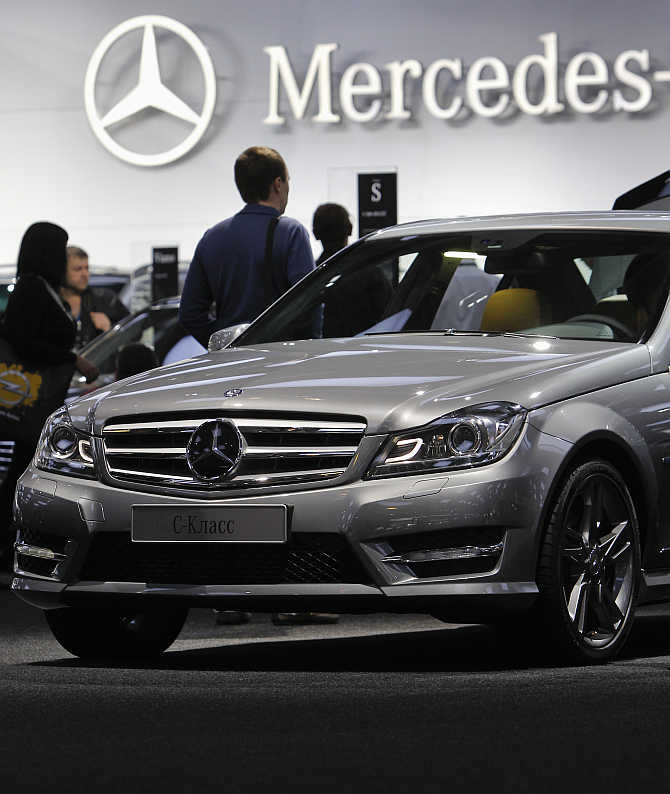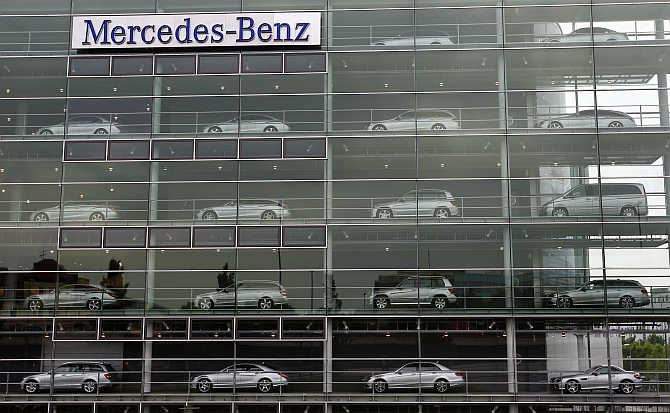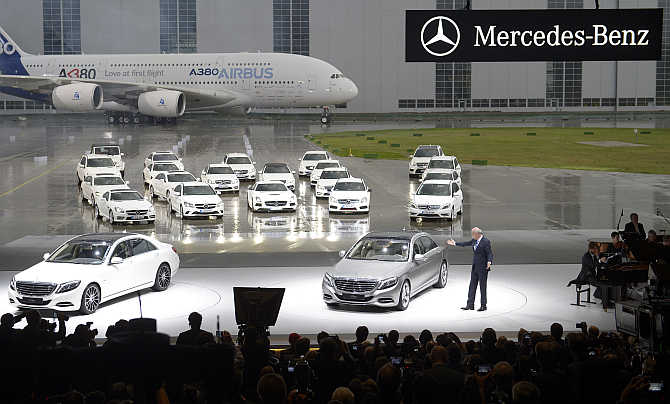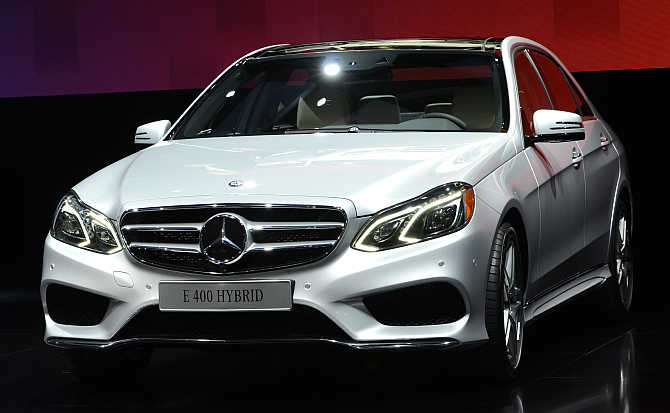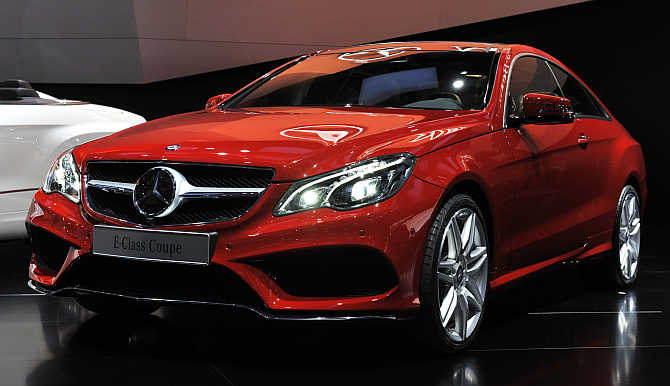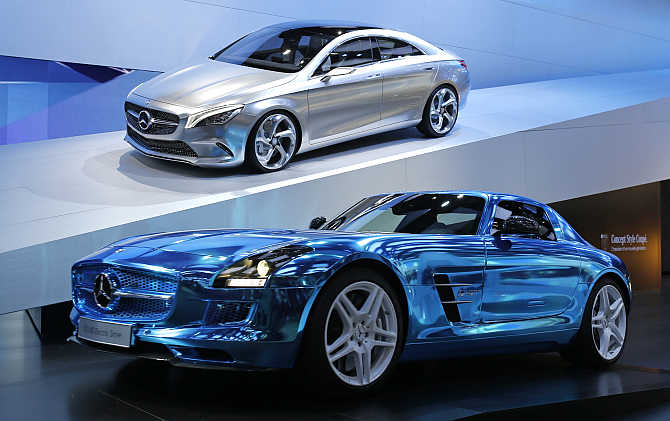 | « Back to article | Print this article |
Mercedes gets its mojo back
After six years of indifferent performance, it sold more cars than market leader Audi in the July-September quarter. Audi, the key profit driver of Germany’s Volkwagen, beat arch rival BMW to become the new number one manufacturer of luxury cars in India in the last financial year.
The speed at which Audi managed to achieve the feat surprised everybody, including people at its headquarters in Ingolstadt, Germany. For the goal was supposed to be achieved in 2015. That the success wasn’t a flash in the pan is evident from the fact that Audi retained the crown of India’s largest luxury car seller in the first two quarters (six months) of this year, too.
Click NEXT to read more...
Mercedes gets its mojo back
Yet, if Audi is looking at the reverse mirror frequently these days, that’s because of the old war horse and fellow German rival, Mercedes-Benz. In the second quarter (July-September), Mercedes sold more cars than Audi (see table). Mercedes sold 2,696 units, marginally more than Audi’s 2,545 units.
In fact, September turned out to be the best month ever for Mercedes in India, with sales crossing 1,000 units, a majority of which came from the newly-introduced A- Class and B-Class premium hatchbacks. The two models, both of which are priced below Rs 25 lakh (base variants), have not only gained significant traction but opened a new segment in the industry.
Click NEXT to read more...
Mercedes gets its mojo back
Due to competitive reasons, Mercedes-Benz India declines to share model-wise sales details. Sources say the A-Class is clocking sales of at least 100 units every month, while the B-Class is selling over 50 units. A fourth of total sales comes from these two models.
The A-Class, priced at Rs 22 lakh, was launched in May, while the B-Class (Rs 21.49 lakh) was launched in September last year. A diesel version of the B-Class was launched in July this year, priced at Rs 23.50 lakh. Though the dimensions of these new cars are compact, the company says there is no compromise on the brand and quality attributes of Mercedes-Benz.
Click NEXT to read more...
Mercedes gets its mojo back
Leather seats, sporty drive and handling, luxurious and comfortable interiors, many of such features which are seen on regular Mercedes cars, are in the A and B-Class as well. Consumers seem to be listening, as the A-Class, only 1.6 feet longer than the Maruti Suzuki Swift but almost five times costlier, has become the largest selling luxury hatchback in the country.
So, who are buying these small cars with such a steep price tag? According to Mercedes-Benz India executives, more than half the buyers of the A-Class are those who have never owned a Mercedes before.
Click NEXT to read more...
Mercedes gets its mojo back
The target class includes those looking for a Toyota Camry, Honda Accord, Volkswagen Passat, Hyundai Sonata, Nissan Teana or Skoda Superb. Eberhard Kern, managing director and chief executive, Mercedes-Benz India, admits the company took a risk by launching the two hatchbacks.
“But the chance we took has paid off. The success of the A and B-Class is incredible. More than 1,000 of them are on the roads already.” The new strategy is a culmination of a carefully crafted policy, the seeds of which were sown at a meeting in November last year.
Click NEXT to read more...
Mercedes gets its mojo back
Senior members of Mercedes-Benz India, its dealers and other partners held a meeting to forge a strategy for 2013 - something that would reverse the declining sales trend and put the company on a growth path. Internally, 2013 was labelled as the ‘year of offence’ for Mercedes in India.
The reason for the desperation was obvious. The entry of BMW in India in 2007 saw buyers flocking to it. Within two years, BMW became the largest luxury car manufacturer in India because of the X1, a compact crossover launched at under Rs 22 lakh.
Click NEXT to read more...
Mercedes gets its mojo back
The entry of Audi in the same year made matters worse. With the backing of Volkswagen and a strong brand pull, Audi quickly climbed to the second spot, pushing the struggling Mercedes to number three.
The November meeting of Mercedes brass has proved to be fruitful, as it led to the launch of the A and B-Class, helping the company reverse its fortunes. The A-Class has an order backlog with waiting periods stretching to over 12 weeks, even as the headquarters in Germany continues to struggle to produce more.
Click NEXT to read more...
Mercedes gets its mojo back
BMW, the former leader in India, finds itself in the number three position and though Audi is still the number one in six-monthly sales, Mercedes is snapping at its heels. To keep the excitement going in India, Mercedes will step up its launch pace. Next year, it will launch the GLA, a compact luxury sports utility vehicle, and the CLA, a four-door coupe. Both these models are expected to be priced under Rs 30 lakh.
Click NEXT to read more...
Mercedes gets its mojo back
With at least 40 per cent of total sales coming from younger cars, Mercedes hopes two of every five cars sold in India by it would be compact ones by 2015. Still, the biggest seller in India would be the E-Class, which sells a little more than 200 units a month and costs Rs 42 lakh.
Competition isn’t exactly sitting tight. BMW launched the 1 Series, its smallest car yet, at under Rs 21 lakh in September, making it the cheapest among the lot. Audi is lining up the launch of A3 sedan.
Last year, Matthias Luhrs, Daimler’s vice-president (sales) for Mercedes Benz Cars, said he expected the company to grab the pole position by 2015-16. Will Mercedes achieve the feat two years before the target set up by its parent, just as Audi did?
